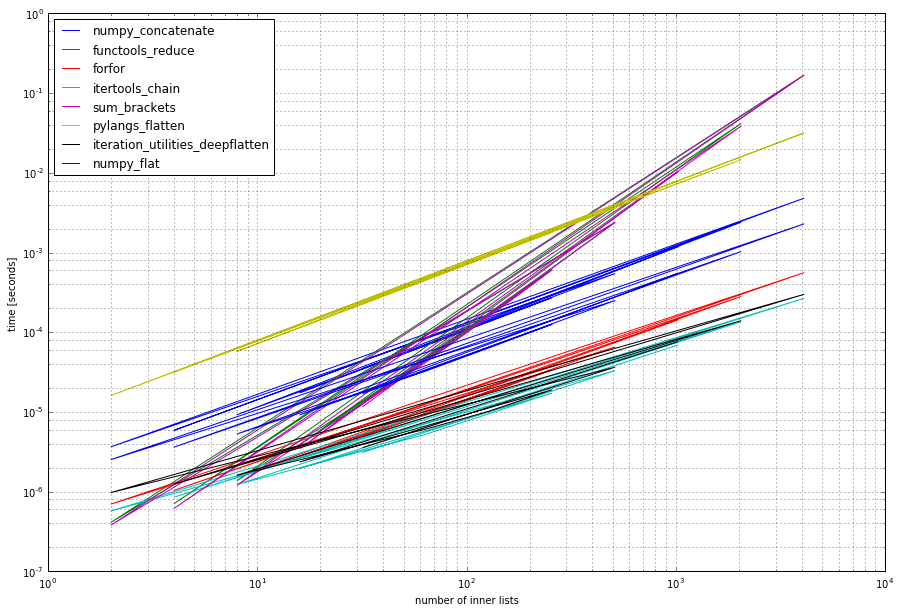1
2
3
4
5
6
7
8
9
10
11
12
13
14
15
16
17
| >>> import numpy
>>> demolist1
[[1, 2, 3], [4, 5, 6], [7, 8, 9]]
>>> demolist2
[[[1, 2], 3], [[4, 5], 6], [[7, 8], 9]]
>>> list(numpy.concatenate(demolist1))
[1, 2, 3, 4, 5, 6, 7, 8, 9]
>>> list(numpy.concatenate(demolist2))
:6: VisibleDeprecationWarning: Creating an ndarray from ragged nested sequences (which is a list-or-tuple of lists-or-tuples-or ndarrays with different lengths or shapes) is deprecated. If you meant to do this, you must specify 'dtype=object' when creating the ndarray
[[1, 2], 3, [4, 5], 6, [7, 8], 9]
>>> list(numpy.array(demolist1).flat)
[1, 2, 3, 4, 5, 6, 7, 8, 9]
>>> list(numpy.array(demolist2).flat)
__main__:1: VisibleDeprecationWarning: Creating an ndarray from ragged nested sequences (which is a list-or-tuple of lists-or-tuples-or ndarrays with different lengths or shapes) is deprecated. If you meant to do this, you must specify 'dtype=object' when creating the ndarray
[[1, 2], 3, [4, 5], 6, [7, 8], 9]
|
